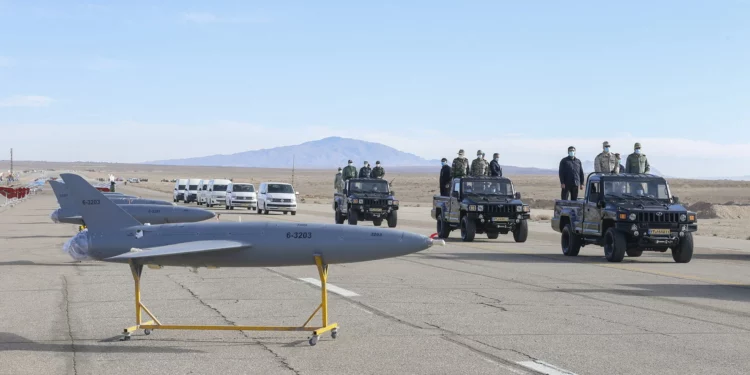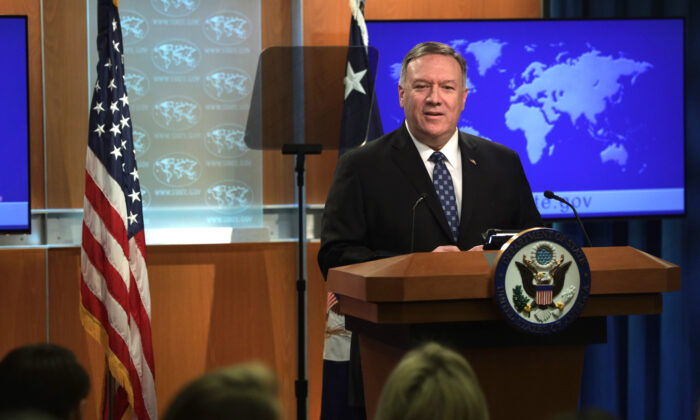The White House caused a stir before this month when a senior authority guaranteed Russia might attempt to get “hundreds” of UAVs from its Middle Eastern partner Iran. In the commentary underneath, The Foundation for Defense of Democracies’ John Hardie, Ryan Brobst and Behnam Ben Taleblu break down what Iran brings to the table, and what it could mean for the conflict in Ukraine. (Iranian drones could make)
As Russia has arraigned its attack of Ukraine, the Russian military has ended up needing in a few regions, outstandingly including automated elevated vehicles. Yet, as per the White House, Russian President Vladimir Putin has an arrangement to relieve that weakness by getting “up to a few hundred UAVs” from Iran.
While it might appear to be an uncommon proposition, the Iranian robot industry is powerful, its items tried on front lines across the Middle East. These Iranian robots might both assist the Russian military at any point with recognizing focuses for its tremendous arms stockpile of gunnery, as well as proposition Russia extra method for going after Ukrainian powers – possibly including Western-gave cannons.
The West ought to plan Ukrainian powers by giving Kyiv extra air guards and electronic fighting frameworks. The supposed robot deal additionally highlights why Washington and its partners ought to push to reinstitute the now-passed UN arms ban on Iran and authorization any people and substances engaged with the UAV bargain. (Iranian drones could make)
Since the finish of the Cold War, Iran has shifted focus over to Russia to remake and update its military after a catastrophic conflict against adjoining Iraq during the 1980s. With regards to drones, be that as it may, it’s an alternate story. The Islamic Republic started emptying assets into its robot program during the 1980s, while the Russian Federation to a great extent ignored such capacities and is presently dashing to get up to speed. Tehran has since arisen as a provincial robot power, handling many various frameworks while multiplying drones and related innovation to intermediary fear bunches across the Middle East. Iran purportedly even opened a robot plant in Tajikistan in May.
Presently, Iranian robot multiplication seems destined for Europe. US insight trusts Tehran “is planning to give Russia up to a few hundred UAVs, including weapons-skilled UAVs, on a facilitated timetable,” National Security Advisor Jake Sullivan declared July 12. He said Iran would start preparing “Russian powers to utilize these UAVs … when early July,” albeit the White House on Tuesday said it has seen “no signs” that the robots had at this point been conveyed or bought. While Tehran denies Sullivan’s allegation, an Iranian military authority in 2019 guaranteed Moscow had communicated interest in buying Iranian robots, and last week Russian media revealed one more Iranian military authority said Tehran is prepared to send out UAVs to “cordial nations.” (Iranian drones could make)
Back in June and afterward again on July 5, a Russian designation supposedly visited Iran’s Kashan Airfield, which has filled in as Tehran’s vital base for UAV preparing for different Middle Eastern dread gatherings. The Russian appointment analyzed the Shahed-191 and Shahed-129 automated battle flying vehicles (UCAVs), which have supposedly seen battle in Iraq and Syria.
“Future refueling tasks with the LMXT blast offer various conceivable outcomes and that future isn’t too distant,” Ken Moss, a resigned U.S. Aviation based armed forces big hauler pilot and Lockheed Martin’s LMXT crusade chief. (Iranian drones could make)
While Russia has as of late started handling its locally delivered Orion UCAV, it’s created only few frameworks, restricting its front-line influence. The Shahed-191 and Shahed-129, the two of which can convey Sadid accuracy directed bombs, would furnish Russia with extra limit.
Russia could utilize these or other Iranian UCAVs to lead close air backing and air prohibition missions. While these robots would confront dangers from Ukrainian air safeguards that have obliged Russia’s monitored fixed-wing and revolving wing airplane, their misfortune would be less expensive. They could likewise help make up for Russia’s lack of accuracy directed weapons dropped by monitored airplane, which sabotages the Russian Air Force’s capacity to lead successful close air backing and air ban. The Ukrainians allegedly dread Russia could utilize Iranian robots to target Ukrainian HIMARS rocket gunnery batteries, which have fashioned devastation on Russian ammunition dumps, bases, and other high esteem focuses lately.
Past UCAVs, Iran likewise has an assortment of unarmed UAVs that could offer Russia more noteworthy limit and — contingent upon the framework gave — capacity to knowledge, observation, and surveillance (ISR). Drone ISR is fundamental for what Moscow calls “surveillance fire and observation strike shapes,” or eliminate chains connecting sensors, order, control and correspondence frameworks, and shooters.
Russian robot ISR, obviously missing right off the bat in the conflict, has improved the Russian military’s viability during the contention’s subsequent stage, during which Russian powers have utilized their current automated resources. Ukrainian powers supposedly express that subsequent to procuring an objective through UAV, Russian cannons commonly takes only three to five minutes to carry exact fire to bear, contrasted with about 30 minutes to convey off base fire while depending on different method for target procurement.
As the UK guard service noted in May, nonetheless, “Russia is probable encountering a deficiency of proper surveillance UAVs for this errand” — something Russian conflict journalists and military bloggers have bemoaned. Russian powers have lost a critical number of ISR drones, especially Orlan-10s, their workhorse framework. Western authorizations limiting Russian imports of cutting edge parts might fuel this test by repressing Russia’s creation limit. In the interim, the two sides have turned to crowdfunding more modest robots utilized for short-range ISR.
At last, Tehran has many single-use assault drones, similar to the Shahed-136, a delta-wing kamikaze drone that Iran utilized the previous summer to strike a big hauler off the shore of Oman, killing two individuals. While Russia has utilized its beginning munitions stockpile of dillydallying weapons in Ukraine, restricted limit is reasonable an issue here also.Tehran likewise claims to has functional enemy of radiation drones, intended to home in on the radar emanations of air guard frameworks. These models could assist the Russian Air With compelling make up for its shortcoming in concealment and obliteration of hostile air safeguards, thus possibly lessening the danger to Russia’s monitored airplane.
In meeting with Kyiv, Washington and its partners ought to consider ways of assisting Ukrainian powers with countering these Iranian robots. For instance, they ought to take a gander at giving Ukraine extra electronic fighting gear. They could likewise reinforce Ukraine’s short-range air guards, whether by obtaining extra Soviet-made frameworks or giving Western-made frameworks like Avenger or M-SHORAD.
Past its nearby ramifications for Ukraine, Tehran’s potential robot move likewise highlights the need to reinstitute and authorize the UN arms ban on Iran, which lapsed in 2020. This issue is especially remarkable given that Tehran could request that Moscow give back in kind by selling Iran progressed weaponry, for example, the S-400 surface-to-air rocket framework. Moscow recently declined to sell Tehran the S-400 yet has left the entryway open to a future deal. (Iranian drones could make)
Washington could singularly “snap back” UN disallowances against Iran — including the arms ban — on the off chance that it’s likewise ready to implode the UN Security Council goal revering the 2015 atomic arrangement. Washington ought to likewise keep on highlighting this issue by authorizing any people and elements engaged with the robots’ possible deal, supply, or move to Russia, expanding on existing legislative and presidential branch endeavors to punish Tehran’s robot program.
Iranian robots stand to help Russia’s military in arraigning Putin’s conflict of supreme animosity against Ukraine. Through military help wedded with conciliatory and monetary tension, the United States and its partners might both assist Ukraine at any point with countering Iranian robots on the front line while tending to the augmenting span of Iranian robot multiplication.









